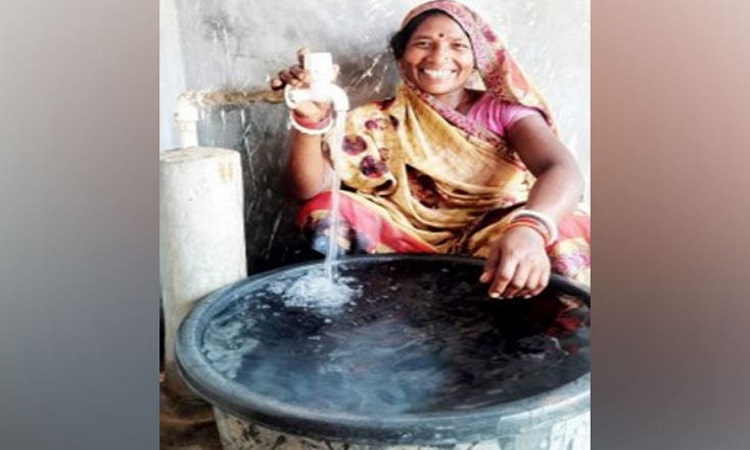World Water Day: India provided tap connections to over 11 crore rural households
World Water Day is celebrated on March 22 every year. It is an annual United Nations Observance, started in 1993, that celebrates water and raises awareness of the two billion people currently living without access to safe water. Read further on Dynamite News:

New Delhi: World Water Day is celebrated on March 22 every year. It is an annual United Nations Observance, started in 1993, that celebrates water and raises awareness of the two billion people currently living without access to safe water.
A core focus of World Water Day is to inspire action towards Sustainable Development Goal (SDG) 6: Water and Sanitation for all by 2030.
The idea for this international day goes back to 1992, the year in which the United Nations Conference on Environment and Development in Rio de Janeiro took place. That same year, the United Nations General Assembly adopted a resolution by which 22 March of each year was declared World Day for Water, to be observed starting in 1993. Later on, other celebrations and events were added.
Initiatives by India for water conservation:
The government of India, under the leadership of Prime Minister Narendra Modi, has been implementing various schemes and programmes like Jal Jeevan Mission, Atal Bhujal Yojana (Atal Jal), Pradhan Mantri Krishi Sinchayee Yojana (PMKSY), Namami Gange, National Aquifer Mapping and Management programme (NAQUIM), for water conservation and for increasing the level of groundwater. The key initiative of these is Jal Jeevan Mission.
The government, in partnership with states, is implementing Jal Jeevan Mission (JJM) to make provision for potable tap water supply to every rural household by 2024. Provisions have been made for source recharging, viz. dedicated bore well recharge structures, rainwater recharge, and rejuvenation of existing water bodies.
Notably, about 11.49 crore households have been provided with tap water connections since the launch of the Jal Jeevan Mission in August 2019. An allocation of Rs 70,000 crores has been made in Union Budget 2022-23, which is 12 times the initial allocation of Rs 5500 crore in the financial year 2018-19.
Also Read |
There will be more participation of women in Jal Jeevan Mission: PM Modi
Piped water supply to Anganwadi Centres has increased from 25,092 on October 02, 2020, to 9.34 lakh on March 21, 2023, which is a 37 times increase. Piped water supply to Schools has increased from 48,772 on October 02, 2020, to 9.02 lakh on March 15, 2023, which is an 18 times increase.
Till January 2023, 5.20 lakh Village Water & Sanitation Committee/Pani Samitis have been formed, and more than 17 lakh women are trained for testing water samples using Field Test Kits (FTKs). Another key initiative is Atal Bhujal Yojana.
Atal Bhujal Yojana, with a total outlay of Rs 6,000 crore is being implemented in 8,220 water-stressed Gram Panchayats of 229 administrative blocks/ Talukas in 80 districts of seven States -- Haryana, Gujarat, Karnataka, Madhya Pradesh, Maharashtra, Rajasthan, and Uttar Pradesh for a period of five years from starting April 2020.
Namami Gange:
Cleaning of the river is a continuous process and the government is supplementing the efforts of the state governments in addressing the challenges of pollution in river Ganga and its tributaries by providing financial and technical assistance under the Namami Gange Programme.
Under this Programme, a set of interventions for cleaning and rejuvenation of river Ganga have been taken up including wastewater treatment, solid waste management, riverfront management (ghats and crematoria), maintaining continuous flow, rural sanitation, afforestation, and biodiversity conservation.
As on February 02, 2023, a total of 409 projects, have been taken up at an estimated cost of Rs 32,912.40 crore, out of which 232 projects have been completed and made operational.
Also Read |
Over lakh households getting water connections daily under Jal Jeevan Mission: PM Modi
Swachh Bharat Mission (Grameen):
The government launched Swachh Bharat Mission (Grameen) on October 2, 2014, with the main aim to make the rural areas of the country Open Defecation Free (ODF) in five years. As on March 16, 2023, over 11 crore latrines have been built across States/UTs.
National Perspective Plan (NPP) of Interlinking of Rivers:
The government formulated a National Perspective Plan (NPP) of the interlinking of rivers for transferring water from surplus basins to deficit basins/areas in 1980. National Water Development Agency (NWDA) has identified 30 links (16 under the Peninsular Component and 14 under the Himalayan Component) for the preparation of Feasibility Reports/ Detailed Project Reports under the Inter-linking of Rivers Project.
The Ken-Betwa Link project (KBLP) is the first link for which implementation has been initiated. The project has been approved by the government with an estimated cost of Rs 44,605 crore at the year 2020-21 price level and central support of Rs 39,317 crore through a Special Purpose Vehicle.
Amrit Sarovar Mission:
Amrit Sarovar Mission was launched on April 24, 2022. The Mission is aimed at developing and rejuvenating 75 water bodies in each district of the country as a part of the celebration of Azadi ka Amrit Mahotsav. A target of construction of 50,000 Amrit Sarovars was set to be completed by August 15, 2023. As on February 08, 2023, more than 30,000 Amrit Sarovars, which constitute 60 per cent of the total target, have been constructed. (ANI)
 Dynamite News
Dynamite News 